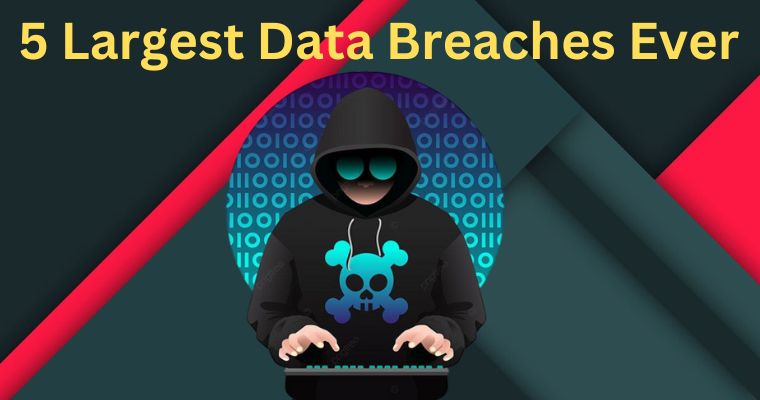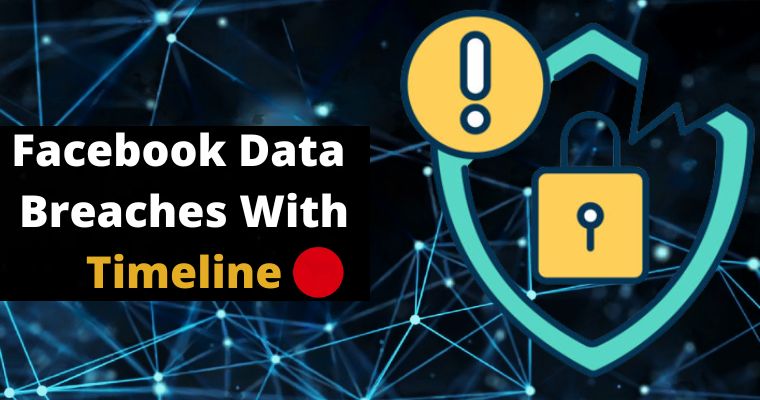Ever since we’ve had the internet, we’ve had data breaches. Some have been minor and caused minimal impact. However, some have been so severe that people’s identities have been stolen and companies have lost billions of dollars and shattered their reputations.
We’re going to look at the five largest data breaches in the world so far. They’ve all happened to big-name companies, and some of them are doozies!
Table of Contents
What is a Data Breach?
In easy terms, whenever a company’s secure information gets into the hands of another person, it’s considered a data breach. These can happen in many ways, from hackers infiltrating the system to staff members selling the information and even technical glitches in the network’s security.
Most companies do not know about data breaches until either the hackers inform them or their tech teams discover the issue. They can be distressing to the users, especially if personal details they didn’t want known get released publicly.
How Do We Define Large in Terms of Data Breaches?
In compiling this list of the top five, there was a lot to consider because the effects of data breaches can be wide ranging. Some companies may worry about the damage to their reputation, how much it costs to mitigate the breach, or how many of their clients had personal details leaked.
In the end, we’ve ranked our list by the number of users that were affected—and these numbers are massive. Here are the five largest data breaches ever, starting with number five:
From 5 to 1 – The Top Data Breaches Ever
5. Facebook
Users affected: 530 million.
Facebook is no stranger to data breaches; since it went public in 2013, it’s had its fair share. The most notable was in April 2021 when it was revealed that a glitch in its contact synch tool leaked the full names, usernames, passwords, and phone numbers of 530 million users.
Even though Facebook insists none of this data was used for any nefarious activity, it’s been hard to confirm this. Hackers with access to this level of data can create havoc for many unsuspecting users.
4. Sina Weibo
Users affected: 538 million.
Sina Weibo, one of China’s largest social media networks, had its database hacked in March 2020, and actors took off with 538 million users’ data. Real names, usernames and passwords, locations, and phone numbers were among the stolen information. It was reportedly sold on the Dark Web for a surprisingly low price of $250—a bargain considering its true worth.
The most concerning part for users was that if they had used the leaked passwords on multiple sites, the hackers could access many other details.
3. LinkedIn
Users affected: 700 million.
In April 2021, hackers performed a data scrape of LinkedIn’s 750 million users and released the details of 700 million of them. The information included full names and usernames, email addresses, phone numbers, and links to social media accounts.
Although some of this data is readily available to other LinkedIn users, the data scrape breached the organization’s terms of service. Email addresses weren’t public domain and opened the door to users receiving phishing and scam notices.
2. Aadhaar
Users affected: 1.1 billion.
Data breaches aren’t confined to the USA and China. In January 2018, 1.1 billion Indian citizens’ data was hacked from Aadhaar, the world’s largest biometric database. Names, addresses, phone numbers, and emails were stolen. Even more concerning, biometric data like eye scans and fingerprints, as well as bank account numbers, were also hacked.
The hack happened via Indane, a state-owned utility company that’s connected to the Aadhaar database; its API had no access controls. The data was sold on WhatsApp for as little as $7 per record. To this day, nobody can be sure just how many persons’ identities have been impacted by this data leak.
1. Yahoo
Users affected: 3 billion.
The granddaddy of all data breaches occurred in August 2013, when Yahoo’s system was hacked. Among the stolen data were users’ personal details, such as their real names, email addresses, dates of birth, telephone numbers, and encrypted passwords.
Worst still, it wasn’t until 2016 that Yahoo made this data breach known and claimed it had affected 1 billion of its users. A year later, Verizon stated that, in fact, every one of its 3 billion users’ information had been hacked.
To date, nobody knows who hacked the system, although Yahoo believes it was ‘state-sponsored actors’ attempting to drive down the company’s value before its sale to Verizon. The value of Yahoo’s stock was estimated to have plunged $350 million as a direct result of the data breach.
Data Breaches Continue to Happen
As you’ve seen, some of the biggest names in the tech industry have had their data breached. Even with all the advances in internet security, if it can happen to them, it can happen to anyone.
If you’re worried about which other sites that you use have experienced data breaches (or might experience them in the future), learn as much as you can about cybersecurity and help protect yourself from hacks and breaches.
While you can probably continue playing the wide variety of games from Novomatic Slots without a worry, the sad reality is that no major site is 100% safe from cyberattacks. In fact, MGM and Caesars both fell victim to massive hacks in September 2023.
Therefore, be careful who you give your personal details to, and only provide essential information. Don’t be afraid to question why certain sites require deeper levels of information before completing any online forms, and feel free to ask them what sort of systems they have in place to protect users.




